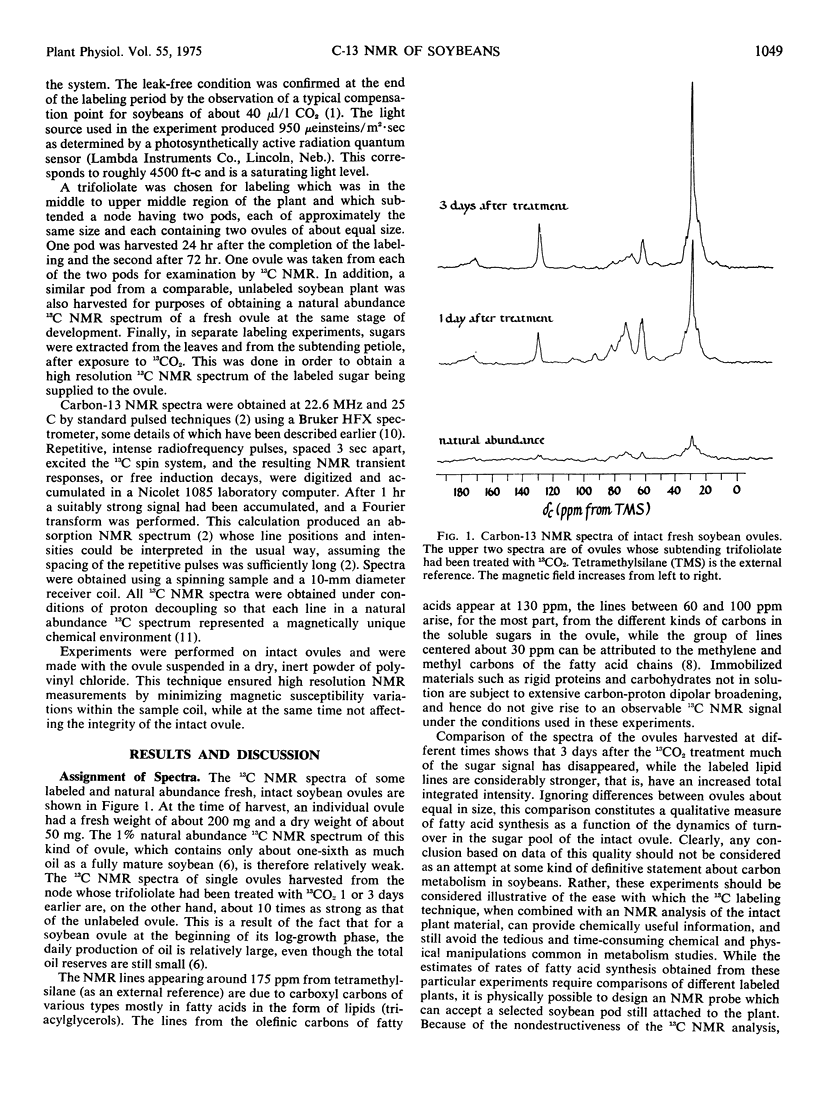Abstract
Fourier transform 13C nuclear magnetic resonance spectra have been obtained of intact, fresh soybean ovules (Glycine max L. cv. Dare) harvested from pods subtended by a trifoliolate exposed to 13CO2 1 to 3 days earlier. The high resolution spectra are interpreted in terms of the labeled sugars and lipids in the ovule. Comparison of the spectra taken over the 3-day period permits qualitative estimates of sugar metabolism and rates of lipid synthesis. The spectra also contain information about the distribution of labels within the lipid chains. This information leads to a method of estimating the extent to which glucose degradation in the synthesizing soybean ovule is involved in the reactions of the phosphogluconate pathway.
Full text
PDF





Selected References
These references are in PubMed. This may not be the complete list of references from this article.
- Séquin U., Scott A. I. Carbon-13 as a label in biosynthetic studies. Science. 1974 Oct 11;186(4159):101–107. doi: 10.1126/science.186.4159.101. [DOI] [PubMed] [Google Scholar]
- Volk R. J., Jackson W. A. Photorespiratory phenomena in maize: oxygen uptake, isotope discrimination, and carbon dioxide efflux. Plant Physiol. 1972 Feb;49(2):218–223. doi: 10.1104/pp.49.2.218. [DOI] [PMC free article] [PubMed] [Google Scholar]
- WOOD H. G., KATZ J. The distribution of C14 in the hexose phosphates and the effect of recycling in the pentose cycle. J Biol Chem. 1958 Dec;233(6):1279–1282. [PubMed] [Google Scholar]


